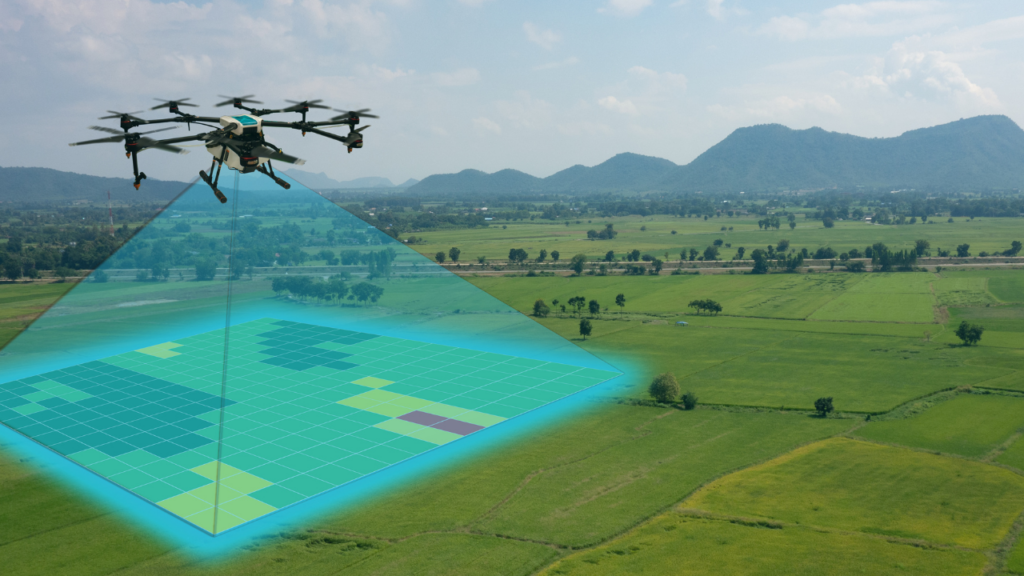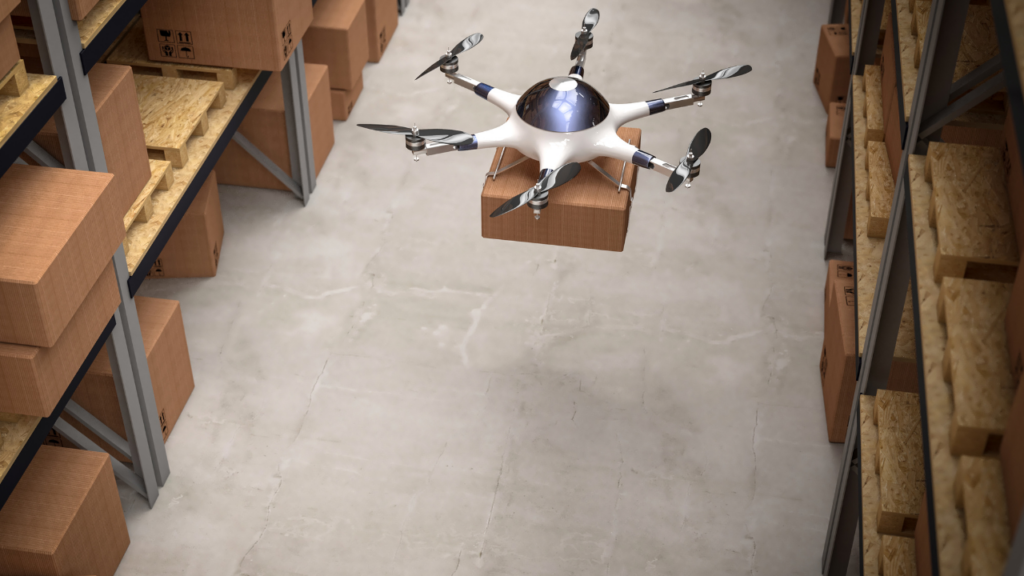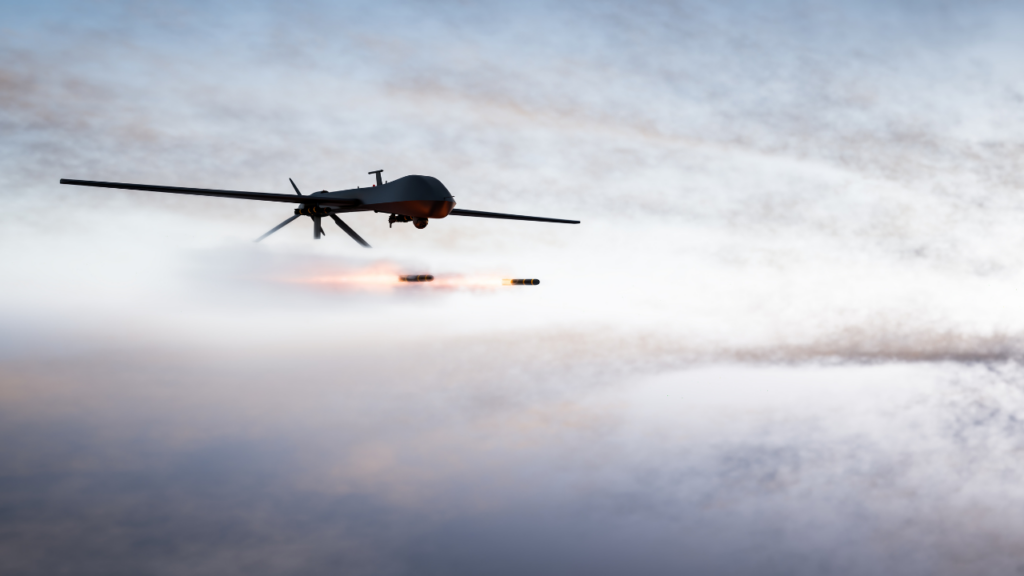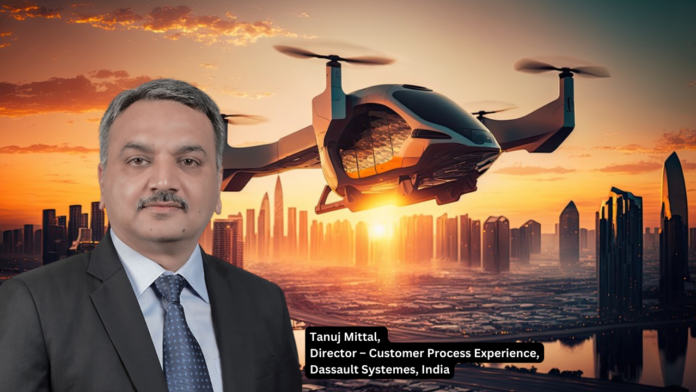At the forefront of innovation, Dassault Systèmes stands as a prominent French multinational software company renowned for its pioneering 3D design solutions catering to diverse industries such as aerospace, defence, automotive, and manufacturing. Notably, it has cemented its position as a trailblazer in the field of drone technology, spearheading advancements that have revolutionized the industry.
Their comprehensive suite of products and services continues to empower drone manufacturers and operators, propelling the aerial landscape to new horizons of efficiency and possibilities. We recently interviewed Tanuj Mittal, Director of Customer Process Experience at Dassault Systemes in India. Here are the excerpts from the interview.
What specific advancements have you observed in the integration of drone technology within key sectors of India’s economy, such as agriculture, infrastructure, logistics, disaster management, and security?
Agriculture: Drones have been increasingly used in agriculture to improve crop management and yield. They can be equipped with Sensors and cameras to collect data on crop health, irrigation, and soil conditions. This data helps farmers make informed decisions about fertilization, pest control, and irrigation, leading to better productivity and reduced costs. In precision agriculture, drones are being used for the targeted application of resources based on specific crop needs. Drones equipped with multispectral and hyperspectral sensors are capable of capturing detailed imagery beyond the visible spectrum. These sensors can detect specific wavelengths of light, providing insights into plant health, stress levels, and disease detection. Farmers can identify early signs of plant diseases, nutrient deficiencies, and other issues by analysing this data, allowing for targeted interventions.

Similarly, drones equipped with spraying systems can autonomously apply fertilizers, pesticides, and herbicides to crops. These drones use precise positioning and mapping data to target specific areas, minimizing chemical usage and reducing potential human exposure. Combined with advanced analytics and machine learning algorithms, drones are now being increasingly used for crop and yield estimation. The Centre has announced a slew of schemes to increase drone usage, including the INR 120 Cr Production Linked Incentive (PLI) scheme to promote manufacturing of drones in the country. Previously PM Modi said, “At a time when we are celebrating Azadi ka Amrit Mahotsav, it is my dream that everyone in India should have a smartphone in his or her hand, every farm should have a drone and every house should have prosperity.”
There is an impressive list of start-up companies like General Aeronautics and Airbots Aerospace that use Dassault Systèmes’ technologies and invest in drones for agricultural applications. TiHAN (Technology Innovation Hub on Autonomous Navigations) at IIT Hyderabad focuses on Unmanned Aerial Vehicles (UAVs) and Unmanned Ground Vehicles (UGVs) for a wide range of applications and have collaborated with global leaders in virtual twins like Dassault Systèmes to provide the right innovation platform to drone manufacturers.
Infrastructure: Drones are being utilized in infrastructure projects for surveying, mapping, and monitoring purposes. LiDAR (Light Detection and Ranging) sensors or photogrammetry techniques can quickly and accurately capture high-resolution aerial images and create 3D models of construction sites, bridges, and roads. This data assists in the efficient planning, design, and monitoring of infrastructure projects, reducing time and costs.
Logistics: Delivery drones have shown the potential to improve last-mile delivery services. Some companies in India have started testing drone delivery systems to transport goods and medical supplies to remote areas. These drones can bypass traffic congestion and provide quick and efficient delivery services, especially in hard-to-reach locations.
Disaster Management: Drones are being used in disaster management to assess the damage, locate survivors, and aid in relief operations. Equipped with thermal imaging cameras and sensors, drones can help identify hotspots, assess structural integrity, and support search and rescue missions. They provide real-time data, enabling authorities to make informed decisions and coordinate response efforts effectively.
Security: Drones play a role in enhancing security measures. They are utilized for border surveillance, crowd monitoring, and event security. Drones equipped with high-definition cameras and facial recognition technology can help authorities identify potential threats and ensure public safety during large gatherings or critical situations.
How has implementing drone technology positively impacted productivity, efficiency, and cost-effectiveness in the sectors where it has been adopted in India?
Drones have significantly increased productivity in various sectors. For example, drones provide real-time data on crop health, soil conditions, and irrigation needs in agriculture. This data helps farmers make informed decisions and take targeted actions, resulting in improved crop yields and productivity. Similarly, drones enable faster and more accurate surveying, mapping, and monitoring in infrastructure projects, reducing manual labor and time required for these tasks.
Drones have improved operational efficiency by streamlining various processes. Drones offer faster and more direct routes for last-mile delivery in sectors like logistics, bypassing traffic congestion and reducing delivery times. This leads to improved customer satisfaction and more efficient use of resources. Additionally, in infrastructure inspection, drones can quickly and thoroughly assess the condition of assets, identifying maintenance needs and potential risks, enabling timely interventions, and minimizing downtime.
Drone technology has brought significant cost savings to sectors where it has been adopted. In agriculture, drones help optimize the use of resources such as fertilizers, pesticides, and water by providing precise data on crop needs. This reduces input costs and minimizes waste, resulting in cost savings for farmers. Drones also reduce the need for manual labour in tasks such as inventory management and asset inspection, leading to cost savings in labour-intensive processes. In fact, drone usage is not just about cost-effectiveness and productivity but also about better safety for humans in areas like pesticide spraying, infrastructure safety assessment (post-disaster), mine inspection, and more.

In your experience, what are the primary challenges or barriers hindering the wider adoption of drone technology across various industries in India?
Integrating drones into existing airspace systems is a significant challenge. Ensuring safe and efficient integration of drones with manned aircraft, airports, and other airspace users requires the development of robust air traffic management systems and protocols.
Coordinating flight paths, managing conflicts, and establishing clear communication protocols are essential aspects that need to be addressed for safe and efficient drone operations. Furthermore, operating drones effectively requires specific skills and training. Pilots must be trained in drone operation, flight planning, emergency procedures, and relevant regulations.
Organizations also need personnel skilled in data analysis, image interpretation, and other specialized tasks. Developing skilled human resources and providing comprehensive training programs can be challenging for widespread adoption.
All that said, the government is making humongous efforts to bridge this gap. For example, the Technology Innovation in Exploration & Mining Foundation (TEXMiN), a section-8 company launched by the government under the aegis of National Mission on Interdisciplinary Cyber-Physical Systems (NM-ICPS) program by the Department of Science and Technology, situated at IIT (ISM) Dhanbad, is actively involved in leveraging Dassault Systèmes 3DEXPERIENCE platform to produce skilled manpower for application of drones in the mining sector.
Other barriers to adoption include the cost of drones as well as concerns about the range of the drones. The government has created schemes like the Drone Kisan scheme and the Sub-Mission on Agriculture Mechanization (SMAM) to help farmers buy or hire drones. Extending the range is a technical challenge, and drone manufacturers are continuously improving the range through elements like lightweight, the use of innovative materials, improved batteries, and optimized system architecture.
In what ways have drones strengthened border control and improved surveillance capabilities in security operations?
Drones equipped with high-resolution cameras, thermal sensors, and other advanced surveillance technologies are increasingly being used for border monitoring. They provide real-time aerial surveillance, enabling border control agencies to detect and track unauthorized border crossings, smuggling activities, and potential security threats. They have lower operational costs, require less manpower, and can cover larger areas in less time. Drones can be deployed for routine border surveillance, reducing the need for continuous manned presence along the entire border perimeter.
Recently, the Border Security Force (BSF) successfully deployed drone-mounted ground penetration radars for the first time to detect any possible underground tunnels created by terrorists to infiltrate the India-Pakistan international border in the Jammu region.
In January 2021, the Indian army signed a contract with ideaForge, a local defence drone manufacturer, to supply specialized tactical drones ‘SWITCH’ for ISR. The Israeli Heron unmanned aerial vehicles (UAV), which are larger and more advanced than tactical drones like SWITCH, are also being deployed at the LAC.

What role should the government and industry stakeholders play in fostering the growth and innovation of drone technology in India’s economy?
The government should develop clear and comprehensive regulations for drone operations, addressing safety, privacy, security, and airspace management. Also, streamlining the process for drone registration, licensing, and permissions is crucial.
The government has introduced The Drone Rules, 2021, to regulate the sector and streamline different procedures for drone manufacturers, operators, and other stakeholders. The Digital Sky platform launched by the government can be leveraged to apply for licenses to fly, manufacture drones, and such other activities. It also provides information related to drones, including zones where you can fly and where you cannot.
The government should encourage and support research and development efforts in drone technology. Funding research programs, establishing innovation hubs, and collaborating with academic institutions and industry partners can accelerate advancements in drone technology, sensors, autonomy, and other related areas. One such Center of Excellence is at iHub – AWaDH (Agriculture and Water Technology Development Hub) established by the Department of Science & Technology (DST), Government of India, situated at the Indian Institute of Technology Ropar as part of the National Mission on Interdisciplinary Cyber-Physical Systems (NM – ICPS) with time-bound predefined deliverables.
The hub supports R&D in the domain of agriculture and water and offers incubation resources and support to technology-based start-ups towards sustainable agriculture leveraging the 3DEXPERIENCE platform from Dassault Systèmes.
Today, it is integral for industry stakeholders to invest in research and development to drive innovation in drone technology. This includes developing advanced sensors, payload capabilities, flight endurance, and data analytics tools. Industry-driven R&D efforts contribute to the growth of the sector and enable the development of tailored solutions for specific industries.
How do you see the future of drone technology in India? What emerging trends or developments do you anticipate in terms of their application and impact on the economy?
The future of drone technology in India will be dynamic and ever-evolving. With advancements in technology, supportive regulations, increased awareness, and collaboration among stakeholders, drones will play a transformative role in improving efficiency, productivity, and safety across various sectors, contributing to India’s economic growth and development. By 2030, the government aims to make India a leading drone hub.
The government has taken many progressive steps to build a strong drone eco-system in India, such as the liberalized Drone Rules, 2021 to free Indian skies, a Production Linked Incentive (PLI) scheme for drone and drone component manufacturers to promote “Make in India”, UTM (Unmanned Aircraft System traffic management) to outline roles and responsibilities of all the key stakeholders, restrictions on drone imports to support local innovation, and “Drone Shakti” program to popularize drone usage.
Two prominent areas for drone application in India would be agriculture and defense, and will contribute significantly to the economy by generating value and reducing imports.


